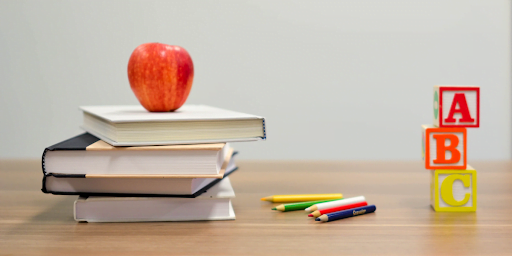The Impact of the Pandemic
Although distance learning provided the opportunity to continue learning safely at home, it was challenging for teachers to help students remain accountable and difficult to build supportive relationships with students. During the pandemic, unrealistic expectations were placed on teachers to conduct virtual learning without much support from administrators or the school board. Laura Massaglia, a high school math teacher, expressed the difficulty of managing unknown “return dates.” . Initially, it was expected that we only stay home for two weeks, which was extended indefinitely. Not knowing what to plan for ahead, teachers were left to navigate virtual learning on their own. Massaglia also stated that, “students did not feel the need to work hard.” Students were given, and continued to expect grace, in their school work resulting in a lack of effort.
Aside from the lack of support teachers received, it was difficult for teachers to create a “class culture.” Class culture is the creation of an environment at school where students feel directly supported by their teachers and peers to learn and explore their interests. Without the ability to create a class culture Dana Humphrey, a high school history teacher, stated “it was so easy for students to disengage and escape from things they didn’t want to in school.” Students did not feel connected to their teacher or peers, making it difficult to hold high standards in their work.
Miguel De La Torre, a high school math teacher, emphasized the learning gap that was created throughout the pandemic. The gap he mentions, that exists as a result of the pandemic, is between “struggling and successful students.” Students who have always done well in school continued to excel in distance learning. However, students who struggled fell further behind without the in-person support provided in school. Moving forward this year, De La Torre expects to provide more intervention strategies to help promote success in all students.
Although the pandemic significantly affected the learning experience of students, there were also some positive outcomes for them. The most obvious result of having experienced distance learning these past two years is students having developed their technology abilities for educational purposes. Students are now able to use various softwares and online resources to help support their learning experiences. Aside from advancing technology skills, they have also been able to appreciate the relevance of the material they are learning in school. For example, Dana Humphrey stated that, “students are beginning to really see the importance of learning about other touchstone moments in U.S. History and the effect they have on society today.” Learning throughout the pandemic has been difficult, but as we start the school year students may now begin to appreciate the value of their education even more.
Starting off the School Year
Although most students returned to school this past year, this school year will reflect much more of a pre-pandemic learning experience. Technology continues to be more relevant in education than ever before; however, there are some forms of technology that become more of a distraction than a tool. Dana Humphry recommends creating, “healthy habits and boundaries regarding phone usage at home to help students with their learning in the classroom.”
In addition to setting boundaries with technology, Laura Massaglia recommends coming up with a system to help students stay organized. This will help relieve some of the back to school stress many students and families experience, and will promote long-term academic success. Massaglia also views communication as a key part of the learning experience. Asking questions, and seeking support can be done in-person or via email. Regardless of the method, students should make an effort to maintain communication with their teachers.
The start of the school year is exciting and overwhelming, but throughout the excitement and stress students and families should remember to start the school year off strong so that they may help ensure long-term academic success.
By Viviana Cabrera
Sources
De La Torre, Miguel. Email Interview. August 21, 2022.
Humphrey, Dana. Email Interview. August 10, 2022.
Massaglia, Laura. Email Interview. August 16, 2022.

